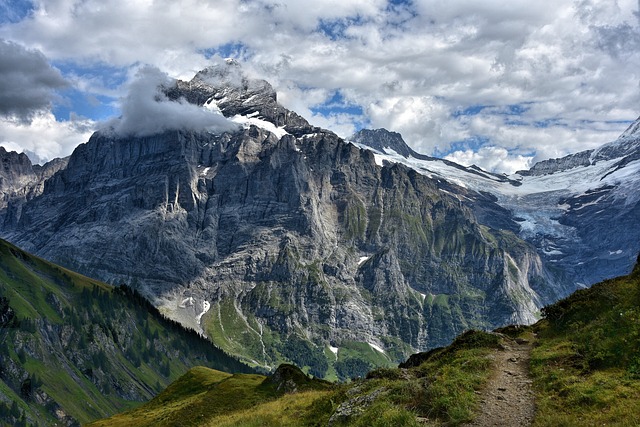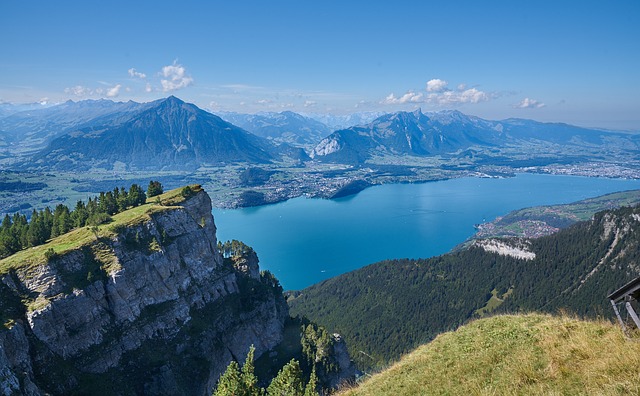Swiss National Parks and Wildlife: A Journey into Nature’s Splendor

Switzerland is often celebrated for its majestic Alps, pristine lakes, and charming villages, but its natural beauty extends far beyond these iconic landscapes. The country is also home to a network of national parks and protected areas that showcase its rich biodiversity and commitment to conservation. From dense forests and alpine meadows to rugged mountain peaks, Swiss national parks offer a sanctuary for wildlife and a haven for nature enthusiasts. This article explores Switzerland’s national parks, their unique ecosystems, and the incredible wildlife that calls them home.
Swiss National Park: The Pioneer of Conservation
Overview
Established in 1914, the Swiss National Park (Schweizerischer Nationalpark) in the canton of Graubünden is the oldest national park in the Alps and one of the most strictly protected areas in Europe. Covering an area of 170 square kilometers, the park is a model of conservation, where nature is left to evolve without human intervention.
Key Features
- Untouched Wilderness: The park’s motto, “Let nature be nature,” reflects its commitment to preserving ecosystems in their natural state.
- Diverse Landscapes: The park encompasses alpine meadows, larch and pine forests, and rugged mountain terrain.
- Hiking Trails: Over 80 kilometers of well-marked trails allow visitors to explore the park while minimizing their impact on the environment.
Wildlife
The Swiss National Park is a haven for wildlife, offering a chance to observe animals in their natural habitat. Some of the species you might encounter include:
- Ibex: These majestic mountain goats are often seen grazing on steep slopes.
- Chamois: Agile and graceful, chamois are a common sight in the park’s rocky areas.
- Golden Eagles: Keep an eye on the skies for these impressive birds of prey.
- Red Deer: During the autumn rutting season, the park echoes with the calls of red deer.
Visitor Tips
- Plan Ahead: The park is open from June to October. Check the weather and trail conditions before your visit.
- Stay on Trails: To protect the fragile ecosystems, visitors must stay on marked paths.
- Bring Binoculars: Wildlife spotting is a highlight of the park, so binoculars will enhance your experience.
Other Protected Areas in Switzerland
While the Swiss National Park is the country’s only national park, Switzerland has several other protected areas and nature parks that are equally worth exploring.
UNESCO Biosphere Reserves
- Entlebuch Biosphere: Located in the canton of Lucerne, this region is known for its moorlands, karst landscapes, and traditional farming practices.
- Val Müstair Biosphere: Adjacent to the Swiss National Park, this area combines natural beauty with cultural heritage, including the UNESCO-listed Convent of St. John.
Regional Nature Parks
- Espace Mont-Blanc: Spanning Switzerland, France, and Italy, this cross-border park offers stunning views of Mont Blanc and diverse alpine ecosystems.
- Parc Ela: Switzerland’s largest nature park, located in Graubünden, features dramatic landscapes, including the Albula Pass and the Landwasser Viaduct.
Wildlife Reserves
- Wildnispark Zurich: Located near Zurich, this park includes the Sihlwald forest and the Langenberg Wildlife Park, where visitors can observe native species like lynx, bison, and wild boar.
- Aletsch Arena: Home to the Aletsch Glacier, the largest glacier in the Alps, this area is a UNESCO World Heritage Site and a habitat for ibex and marmots.
Wildlife in Switzerland
Switzerland’s diverse habitats support a wide range of wildlife, from alpine species to forest dwellers. Here are some of the country’s most iconic animals:
- Alpine Ibex: Once nearly extinct, the ibex has made a remarkable comeback thanks to conservation efforts. These sure-footed animals are often seen in rocky, high-altitude areas.
- Chamois: Similar to goats, chamois are adapted to life in the mountains and are known for their agility and speed.
- Red Deer: The largest wild mammal in Switzerland, red deer are commonly found in forests and alpine meadows.
- Lynx: This elusive predator has been reintroduced to Switzerland and plays a crucial role in controlling deer populations.
- Marmots: These social rodents are a common sight in alpine meadows, where they live in burrows and hibernate during winter.
- Golden Eagles: With a wingspan of up to 2.2 meters, these majestic birds are a symbol of the Swiss Alps.
- Bearded Vultures: Also known as lammergeiers, these rare birds are being reintroduced to the Alps and can be spotted in remote areas.
Conservation Efforts in Switzerland
Switzerland is committed to preserving its natural heritage through various conservation initiatives. Key efforts include:
- Rewilding: Reintroducing native species like lynx, wolves, and bearded vultures to restore ecological balance.
- Habitat Protection: Establishing protected areas and promoting sustainable land use practices.
- Public Awareness: Educating the public about the importance of biodiversity and conservation.
Exploring Swiss National Parks and Wildlife
Best Times to Visit
- Summer (June to September): Ideal for hiking, wildlife spotting, and enjoying the alpine flora.
- Autumn (September to October): Witness the stunning fall colors and the red deer rutting season.
Activities
- Hiking: Explore the parks’ extensive trail networks, ranging from easy walks to challenging treks.
- Wildlife Watching: Join guided tours or simply keep your eyes peeled for animals in their natural habitats.
- Photography: Capture the breathtaking landscapes and diverse wildlife.
- Educational Programs: Participate in guided tours and workshops to learn about the parks’ ecosystems and conservation efforts.
Responsible Tourism Tips
- Respect Wildlife: Observe animals from a distance and avoid disturbing them.
- Leave No Trace: Pack out all trash and avoid picking plants or disturbing natural features.
- Support Conservation: Consider donating to organizations that protect Switzerland’s natural heritage.




